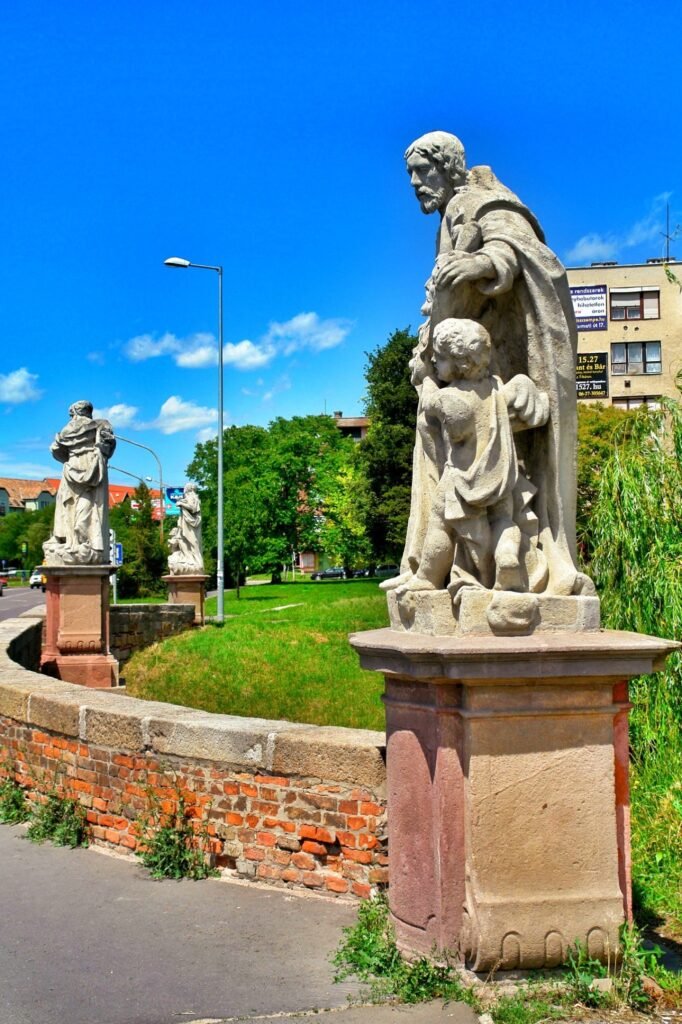About 20 kilometers north of Budapest lies the small town of Szentendre, home to just over 20,000 residents. This quaint town is a miniature tourist haven nestled along the clear waters of the Danube’s tributary, the Szentendre River. All of its buildings, whether intentionally or not, retain a medieval charm—cobbled streets, narrow winding alleys, vibrant walls and roofs, and dazzling floral lanterns, creating an atmosphere of romance and warmth.
The town is home to seven ancient churches, their white walls and green tiles topped with spires, symbolizing a land imbued with a deep religious heritage. The local houses, with bright red roofs and colorful facades, are built along the riverside and stretch up the slopes in neat, picturesque rows.
The main streets wind along the riverbank, lined with a variety of shops, including clothing stores, souvenir shops, artisan workshops, galleries, museums, restaurants, bars, and cafes, offering visitors a delightful range of choices. Not far from the town lies an open-air ethnographic museum, a preserved cultural village specifically designed for tourists to explore local traditions and folklore.
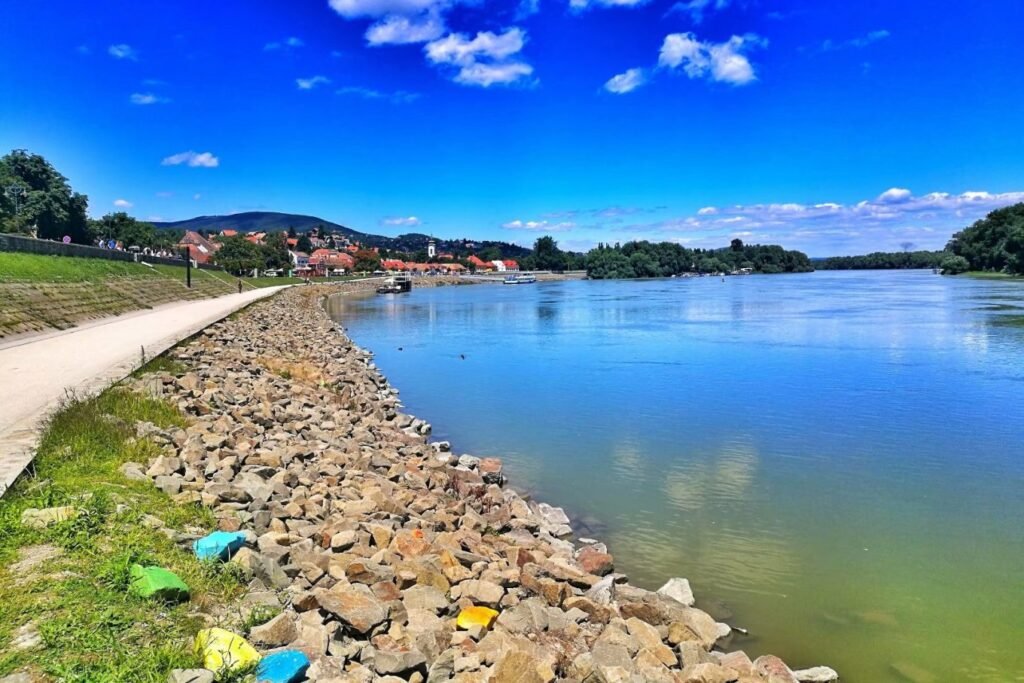
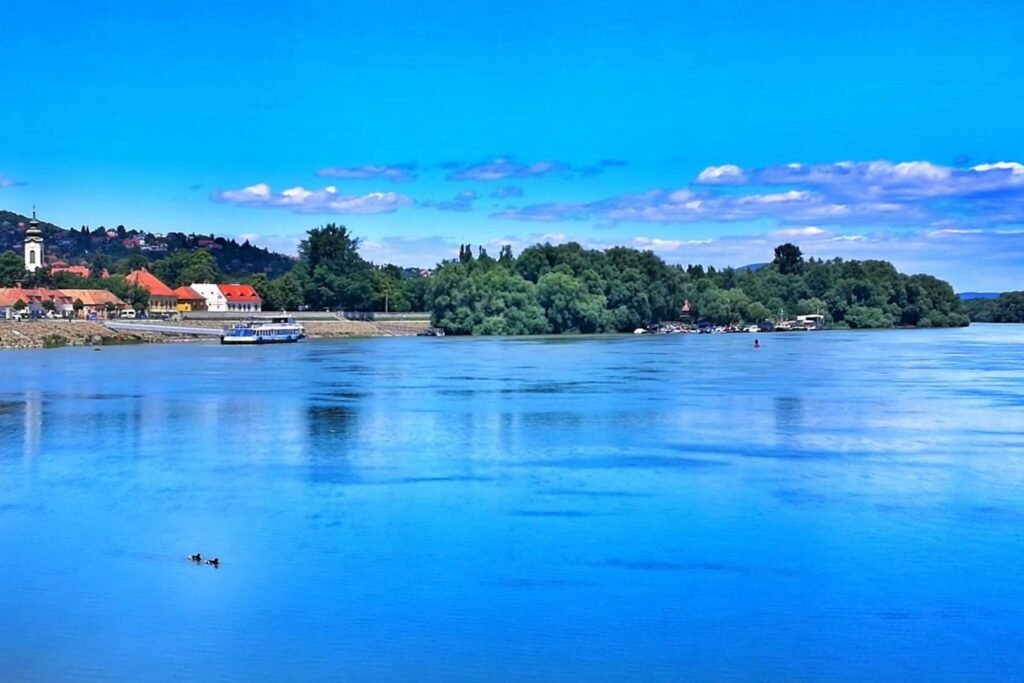
The Szentendre Danube Riverside (Szentendrei Duna-part) is located about 20 kilometers north of Budapest. In this area, the beautiful Danube winds its way between Szentendre and Visegrád, a scenic stretch commonly known as the “Danube Bend.” The port along the Szentendre River has become a popular tourist dock. Every summer, visitors from Budapest arrive by cruise ships to explore this charming town, enjoying leisurely vacations and relaxing getaways.
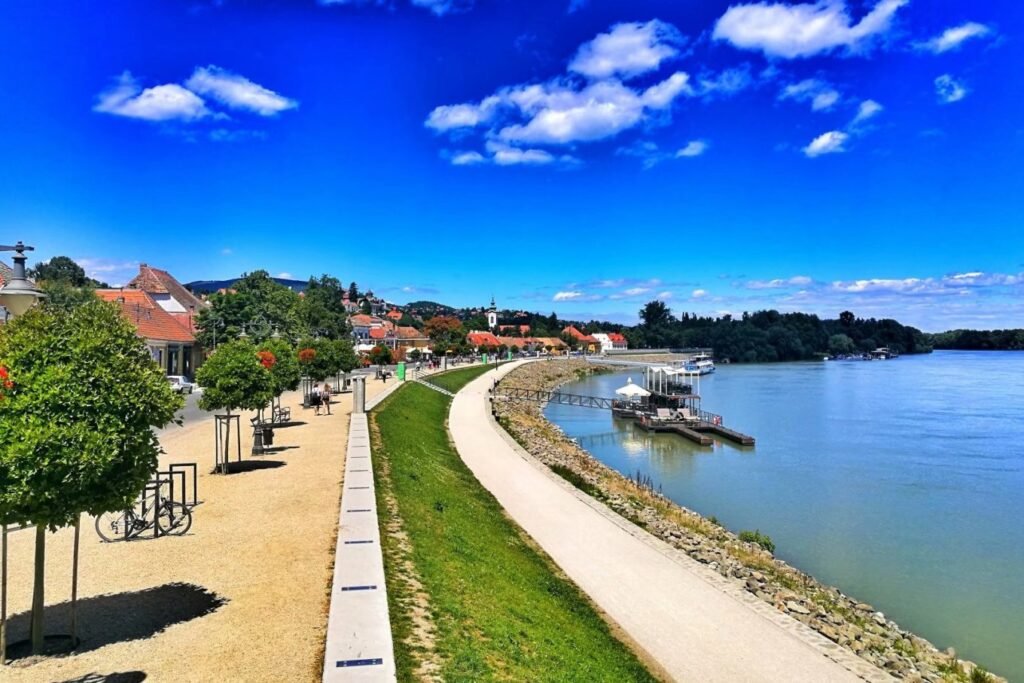

The Szent András Catholic Church sits atop a hill in the town of Szentendre, marking its highest point. It is less than a 30-minute walk from the central station. Originally built in the 13th century, the church was damaged and later restored in 1715. Its altar, in continuous use since 1760, remains a historical highlight. Although the interior of the church is closed to the public, the square in front offers the best panoramic view of the town below.

The Retro Design Center is a unique museum located in the heart of Szentendre. Covering an exhibition area of around 1,000 square meters, it displays about 30 cars, along with a few motorcycles, several Soviet-era bicycles, and numerous nostalgic items. The collection focuses primarily on artifacts from the 1970s and 1980s, including vintage furniture, old telephones, classic televisions, radios, cassette players, vinyl records, retro beer cans, cigarette boxes, and even old toys. There’s also an aerial carousel, adding to the charm and evoking fond memories of the past.
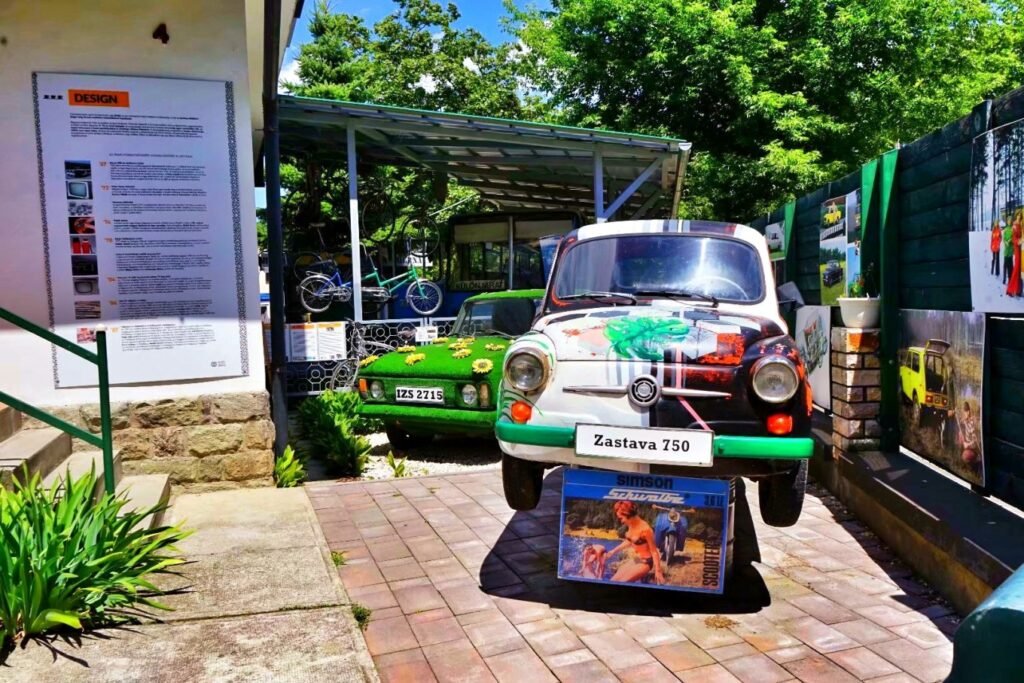
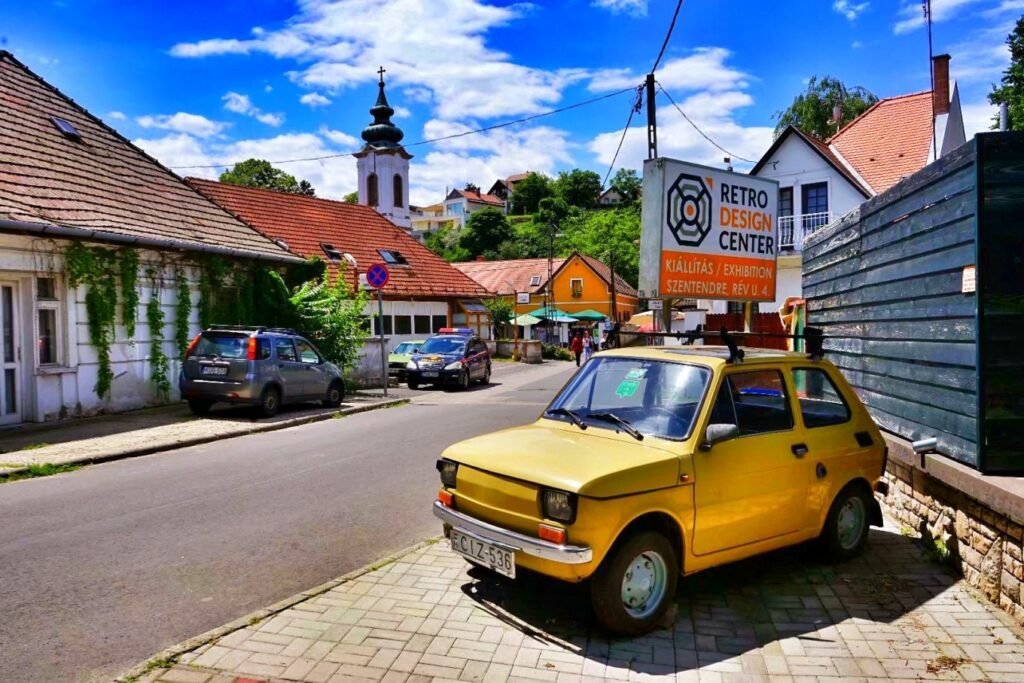
The Micro Wonder Museum is a place dedicated to the exhibition of miniature artworks. Though small in size, the museum offers an extraordinary and unique collection. Some of the micro-sculptures and miniature artworks are crafted from a single strand of hair or a poppy seed, with their intricate details only visible through specialized microscopes. The museum also features a café, providing visitors with a cozy space to relax after exploring these fascinating exhibits.
The Blagovechenka Orthodox Church, located next to Cross Square, is one of the oldest and most renowned churches in Szentendre. Also known as the “Temple,” this Greek Orthodox church was built in 1763 in the Baroque style. Inside, it features exquisite frescoes of Emperor Constantine and Saint Helena. Its towering structure stands out with a distinctive charm—the soft yellow tower body topped by an onion-shaped dome in pale green. The church’s height also makes it a perfect vantage point for enjoying panoramic views of the entire town.


Saint John the Baptist’s Parish Church is one of the oldest and most famous churches in Szentendre. Originally founded between 1241 and 1280, the current structure was built in 1751 on the site of the former church, which had been destroyed. The church preserves elements of both Gothic and Baroque styles in its exterior and interior. Inside, the murals were painted by a local artist in the 1930s, adding a unique artistic touch to the historic space.
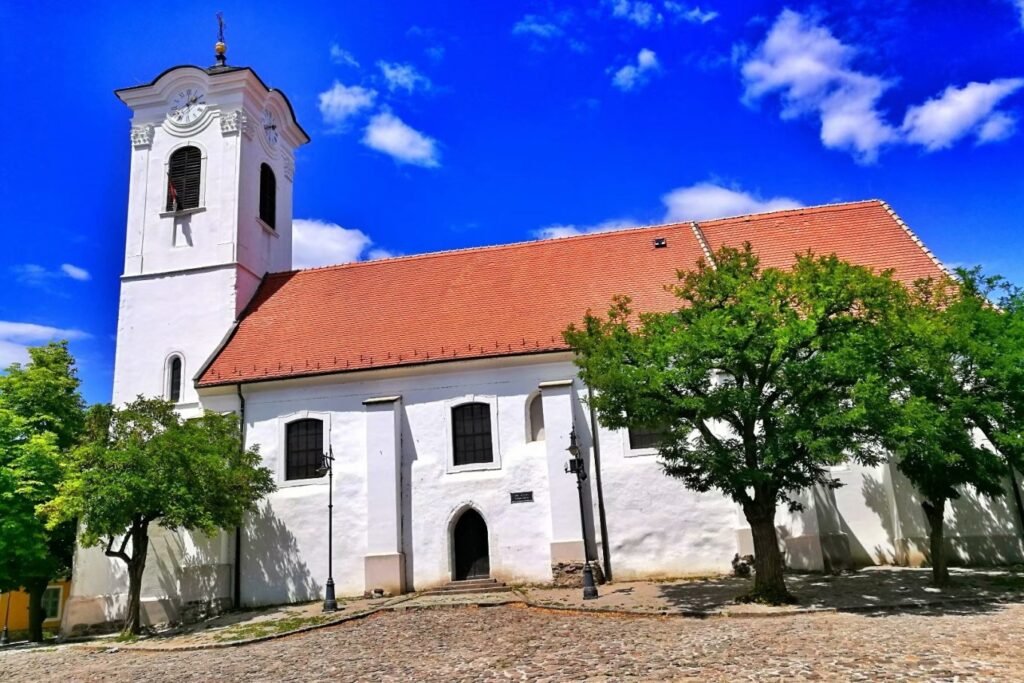
The Belgrade Serb Orthodox Cathedral is an Orthodox church in Szentendre, built through donations from the town’s Serbian community as a place for prayer. The church is connected to the Serbian student dormitory and shares the same garden with the Serbian Museum. It is said that the town once had seven Serbian Orthodox churches, but only this one and three other cathedrals remain today.
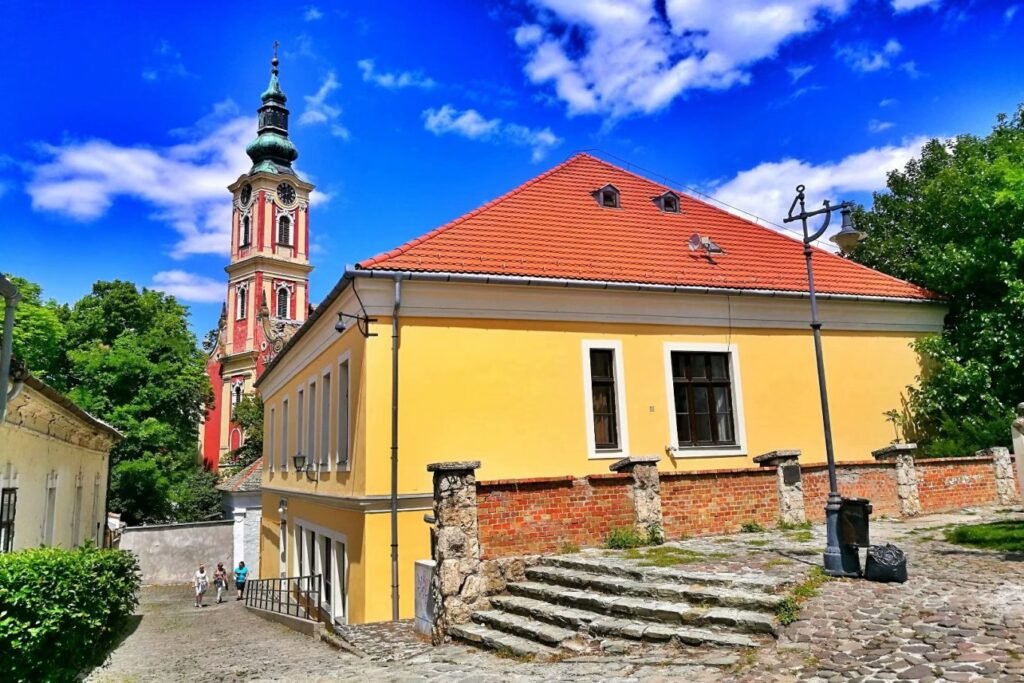
Visegrád
Leaving Szentendre, we arrive at Visegrád, another small town not far north of Budapest, but one with greater renown due to its famous medieval fortress, often referred to as the “Castle in the Clouds.” In the Middle Ages, Visegrád was even called a “paradise on earth” and remains one of Hungary’s top tourist attractions.
Perched atop a mountain, the ancient castle is visible from afar, towering majestically over the landscape. As the highest point in Visegrád, it offers stunning panoramic views. From the top, visitors can admire the beautiful Danube River and the charming scenery of the town below, making it the perfect spot to take in the breathtaking surroundings.
Unlike other small towns, Visegrád holds historical significance as a former royal capital. Its strategic location was recognized as early as 330 AD, when the Romans built early fortifications here. In 1235, King Béla IV of Hungary constructed a strong stone fortress on the mountaintop to fend off the Mongol invasion. Its elevated position often caused sunlight to reflect brilliantly off its walls, earning it the nickname “Castle in the Clouds” or “Colorful Fortress.”
In 1308, King Charles I of Hungary chose Visegrád as the royal seat for his queen and expanded the castle, adding new, luxurious palaces. During this time, the kings of Bohemia and Poland also met here, marking the foundation of one of the earliest Central European alliances. Later, under the reign of the illustrious King Matthias I, Renaissance elements were introduced into the castle, and new walls and ornate rooms were added, making it one of the most splendid royal residences in Europe. For over two centuries, from the 14th to the 15th century, Visegrád flourished as the royal capital or a favored royal residence.
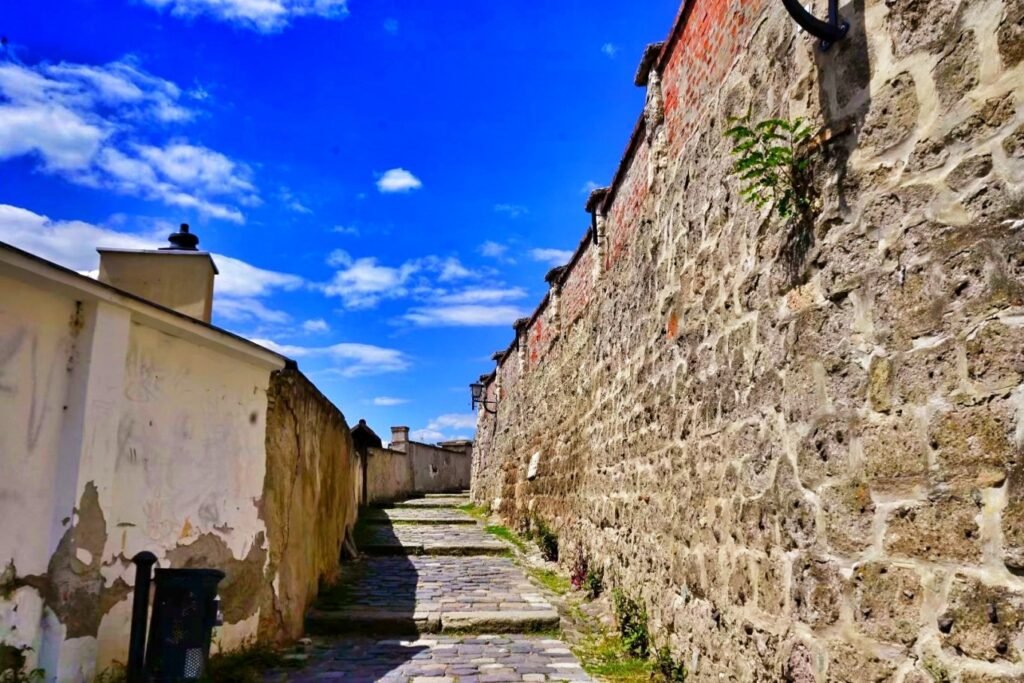
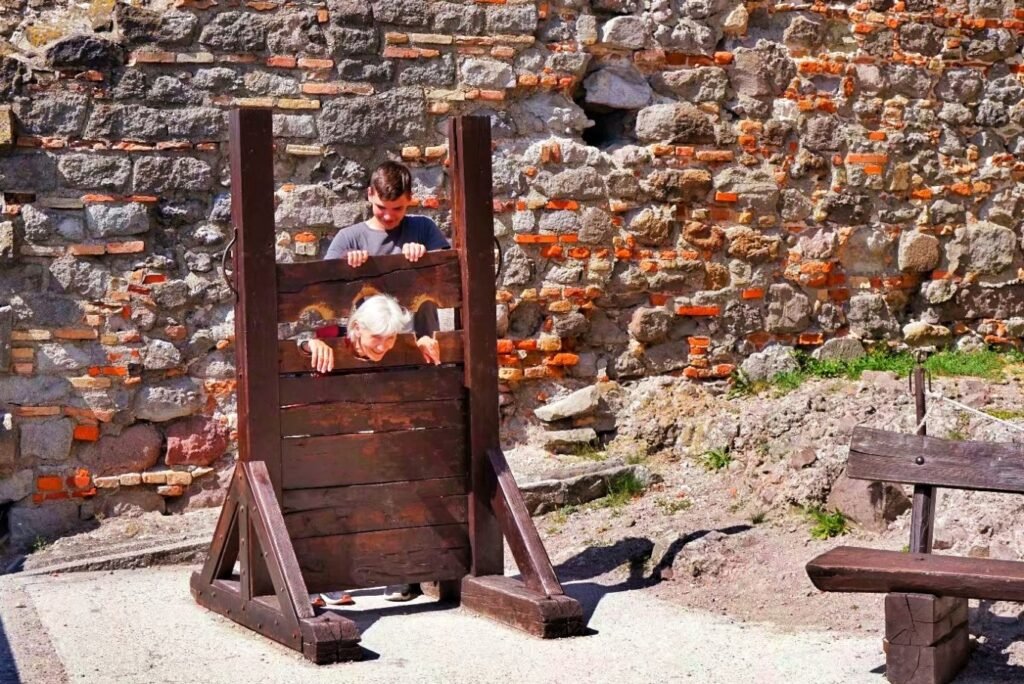
However, the glory was short-lived. By the end of the 17th century, the castle was destroyed by the Ottomans. Though now a ruin, the remnants—crumbling walls and stone terraces—still hint at its former grandeur. At its peak, the castle boasted over 350 lavish rooms, and its courtyard even featured a Hercules Fountain that flowed with fine wine. Excavation and restoration work on the castle has been ongoing for over a century, and the site now serves as a museum where visitors can reflect on its rich history.
Interestingly, in 1991, more than 600 years after the original alliance was formed, Hungary hosted the leaders of Poland, the Czech Republic, and Slovakia in Visegrád. This historic meeting led to the formation of the Visegrád Group, marking the revival of a Central European alliance and securing Visegrád’s place in modern history.


The Citadel of Visegrád is located on the top of a 328-meter-high mountain.
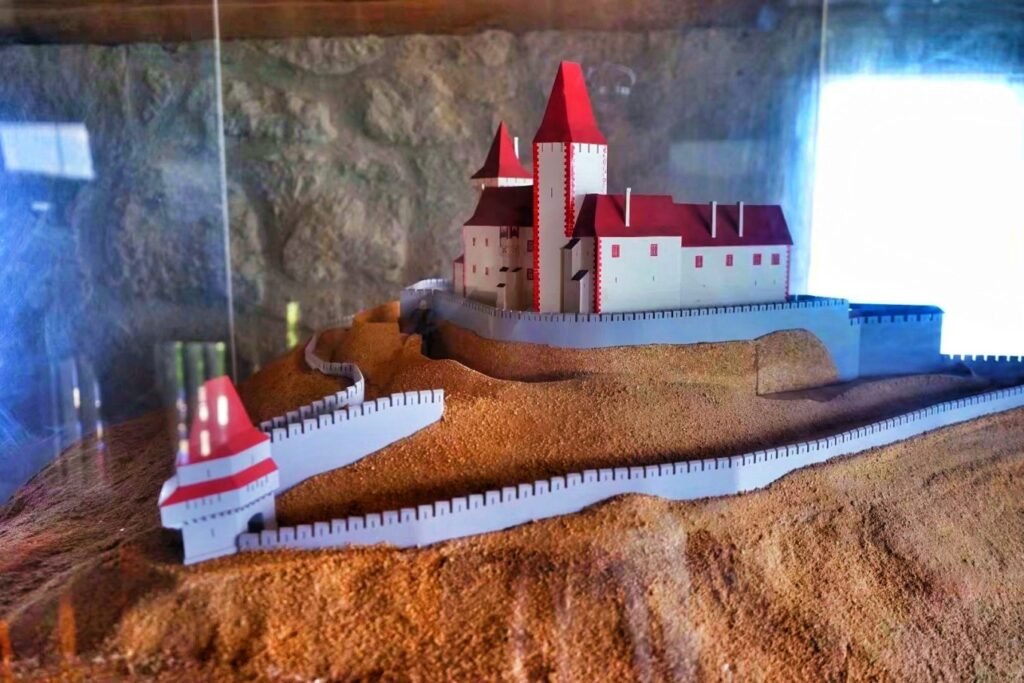
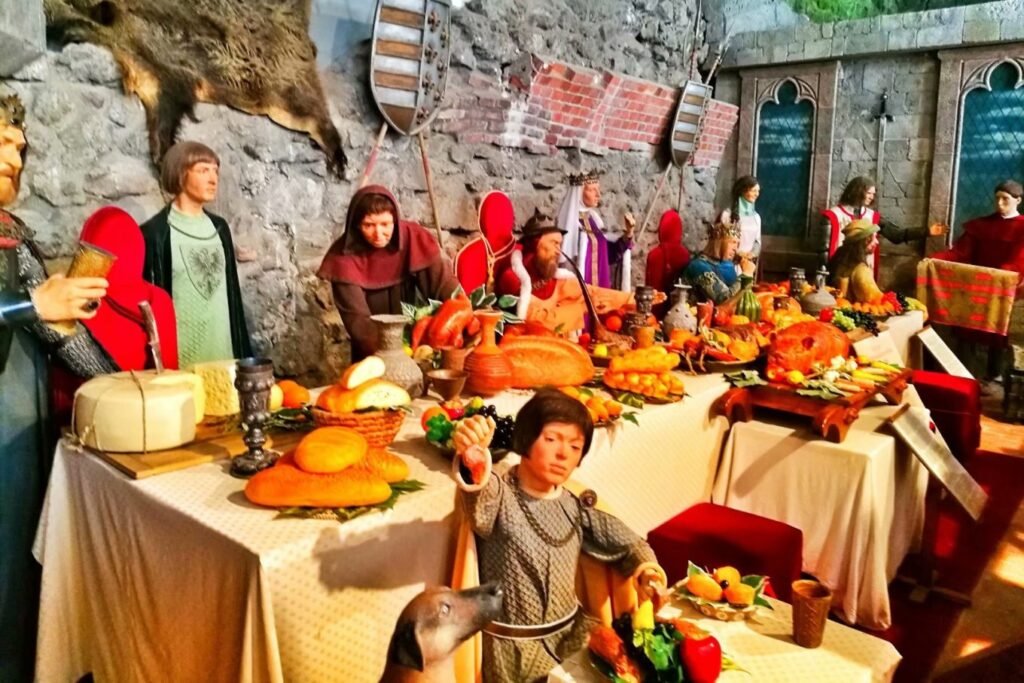
This is a complete model of the Visegrád Castle. Archaeological excavations and restoration efforts began in 1870, though they have been interrupted multiple times over the years. While much of the castle has been restored, significant portions remain unfinished, with a considerable amount of work still needed to fully restore it to its former glory. The project seems far from completion, but the progress made so far provides a glimpse of the castle’s original splendor.
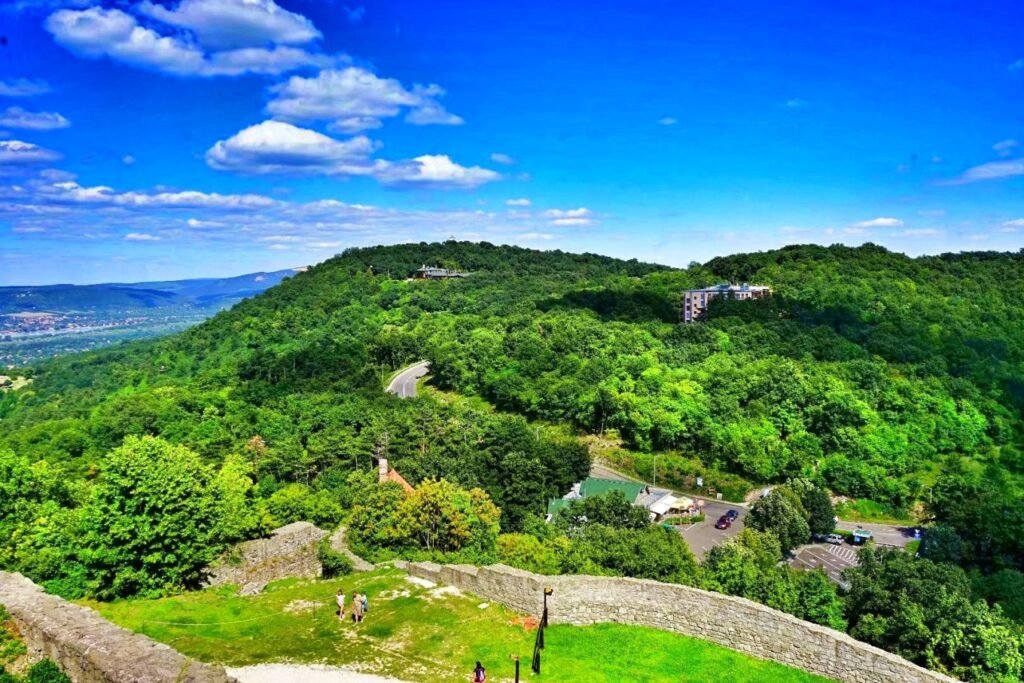
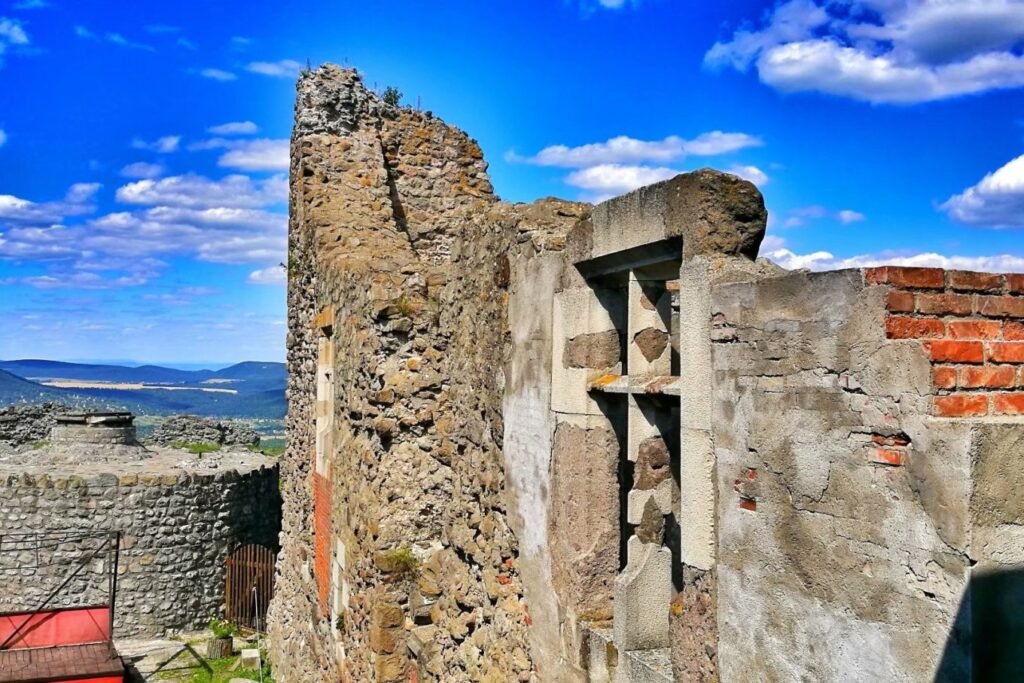
The Cloud Castle stands on the hillside, looking down at the town below and gazing at the ever-flowing Danube River day and night.
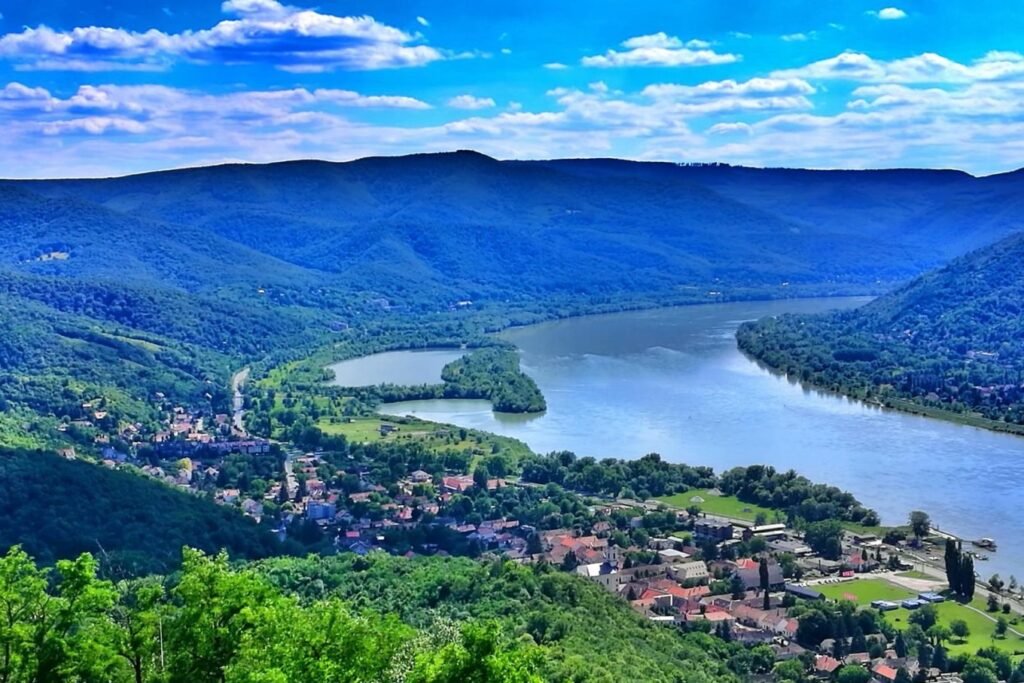

The “knee bend” formed by the Danube at Visegrád is a rare and stunning natural spectacle. As the river flows from west to east, it makes a sharp 90-degree turn here, dramatically changing its direction. This bend not only alters the course of the river but also creates a fertile, lush oasis, rich in natural beauty and resources.
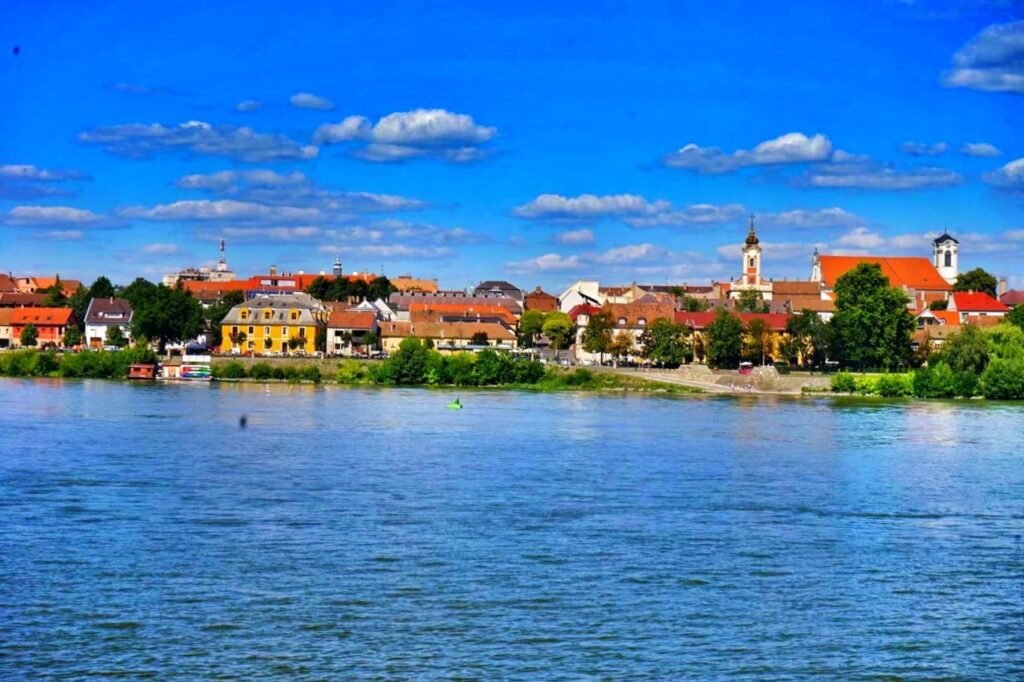
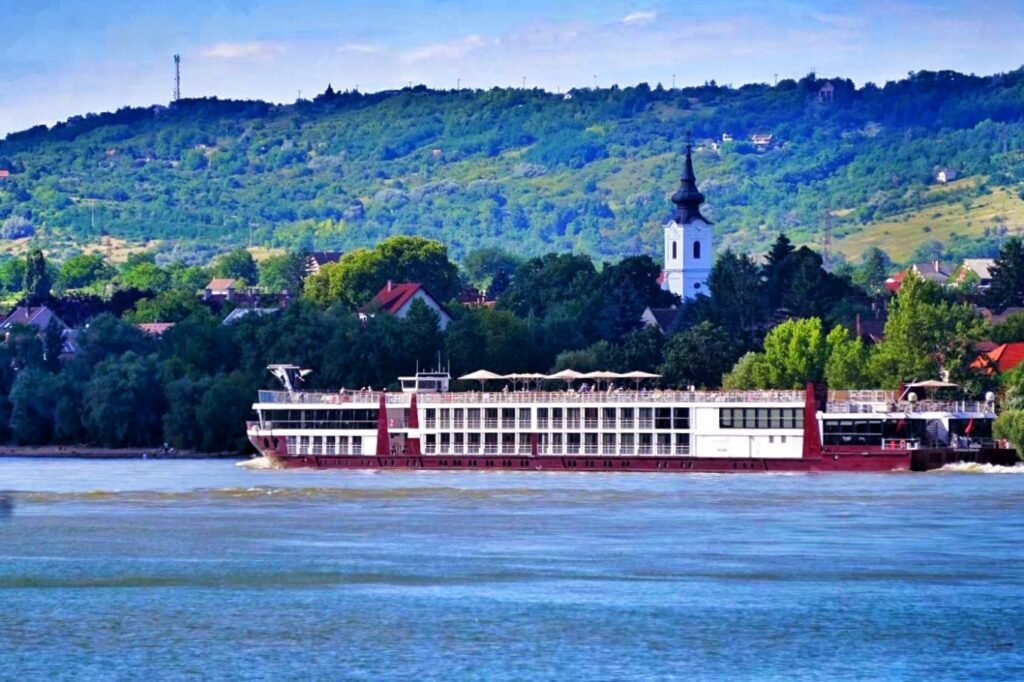
Vác
Vác is another beautiful town located along the Danube’s famous “knee bend” (Donauknie). The Danube, often called the “Mother River of Europe,” originates in southwestern Germany and flows west to east through Austria, Slovakia, Hungary, Croatia, Serbia, Bulgaria, and Romania, before emptying into the Black Sea. As it enters Hungary from Slovakia, the river makes a sharp 90-degree turn at the bend, shifting its flow from west-east to north-south. This region, known as the Danube Bend, is home to four picturesque towns, with Vác being one of them.
Each of these towns exudes romantic charm and unique beauty, making the area a popular destination for leisure and tourism. However, unlike its lively neighbors—Szentendre, Visegrád, and Esztergom—Vác remains strangely quiet, receiving little attention or promotion. Despite being rich in culture and history, it is often left out of Budapest’s popular day-trip itineraries. While many know Budapest’s famous Váci Street, far fewer are familiar with the town of Vác itself. Even organized tours of the “Danube Bend” tend to skip Vác, focusing instead on the trio of Szentendre, Esztergom, and Visegrád, as if Vác didn’t exist at all.
In truth, Vác holds as much historical and cultural significance as its neighbors—if not more. Established in 896, Vác was among the first settlements founded by the Magyars upon their arrival in the Carpathian Basin. It also became one of Hungary’s earliest religious centers, playing a crucial role as an episcopal seat. Throughout its history, the town shaped the development of trade, craftsmanship, architecture, and culture, significantly influencing the region’s progress.
In 1846, Hungary’s first railway was built between Vác and Budapest, spurring economic growth and elevating the town’s prominence. Vác also witnessed two key battles during the Hungarian War of Independence (1848–1849). To commemorate the town’s victories, a triumphal arch was erected—the only one of its kind in Hungary.
Today, Vác still preserves many historical landmarks. The town’s central square features a Baroque-style Town Hall, and the Tragor Ignác Museum holds a chapel housing mummies, a rare and fascinating attraction. Vác is home to numerous churches and museums, earning it the title “City of Culture.” The town’s rich architectural heritage, cultural exhibitions, and annual festivals make it a destination worthy of much more attention than it currently receives.
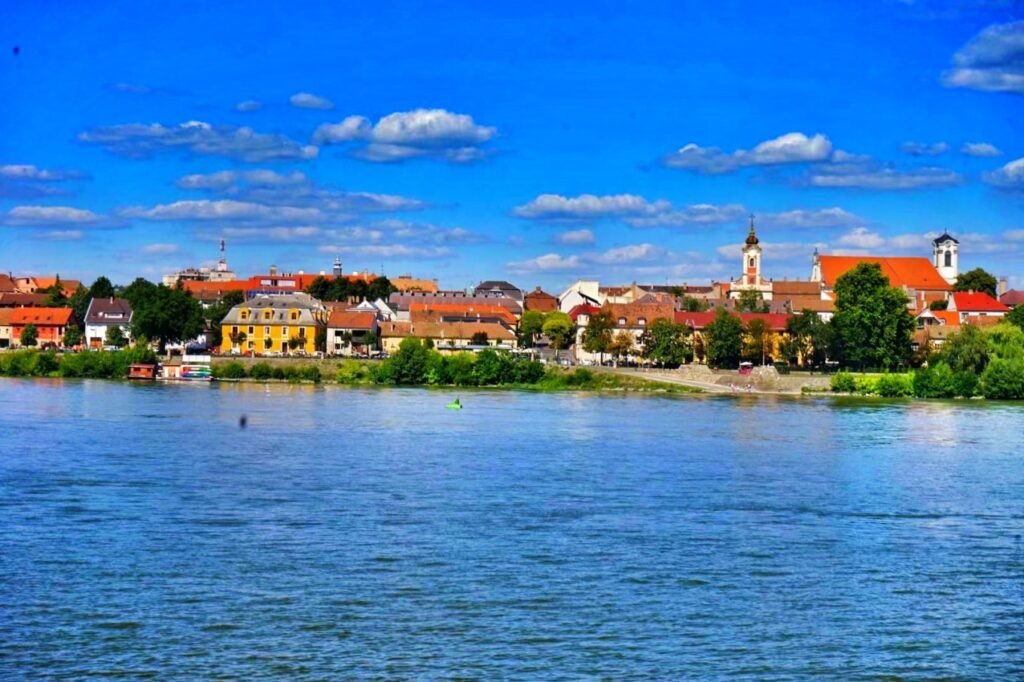
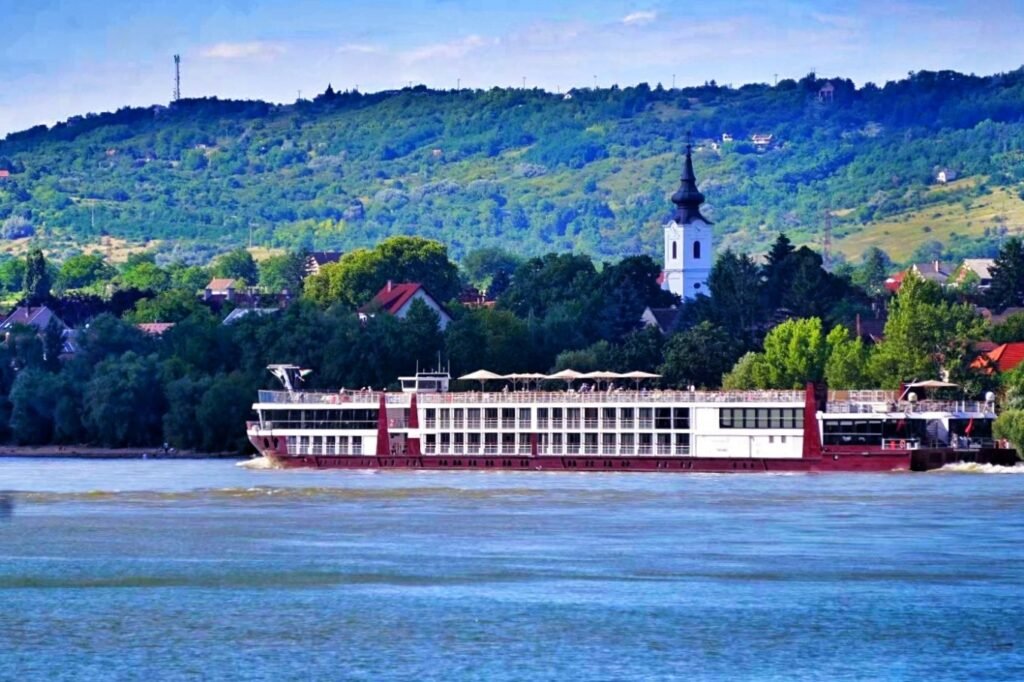
The Church of the Whites, also known as the White Church, takes its name from the monks who wore white robes. The church and its adjoining monastery were initiated under the direction of Martin Kalcher in 1699. However, due to disruptions from the Rákóczi War of Independence and natural disasters, construction was delayed, and the church was only completed in 1775.
Built primarily in the Baroque style, the church features a tower in the Rococo style, which rises elegantly beside the sanctuary. In 1994, during renovation work, an unexpected discovery was made beneath the tower behind a sealed doorway—265 coffins, including naturally mummified human remains. This discovery revealed a hidden chapter of local history, adding a layer of mystery to the church’s past. As a result, it has since become known colloquially as the “Mummy Church.”
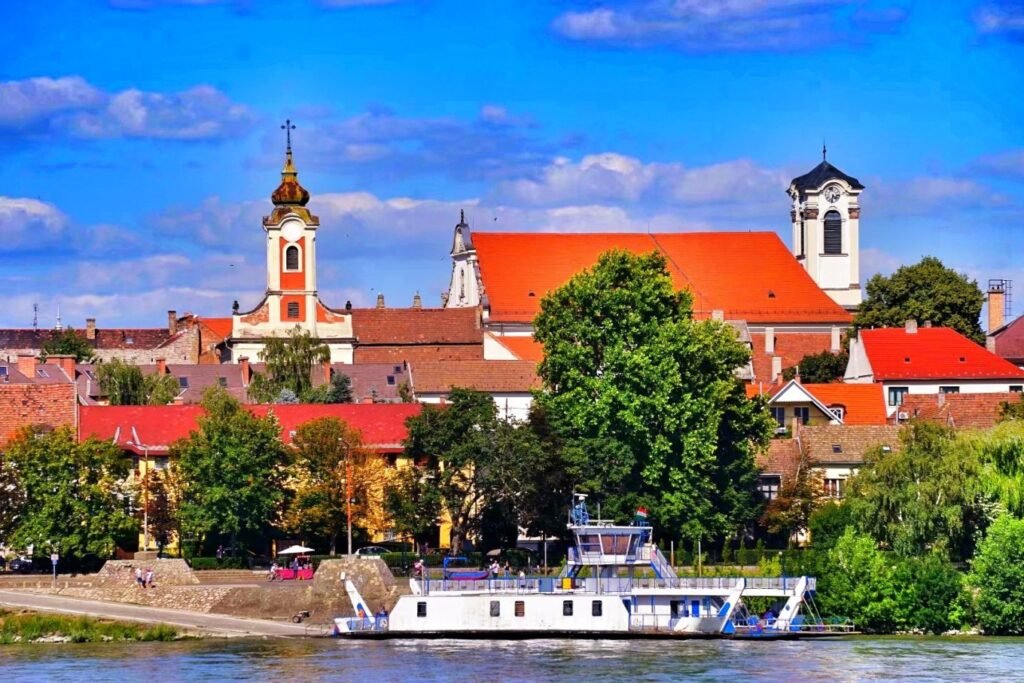
The Assumption Cathedral in Vác is one of the city’s most iconic landmarks. It is the largest church in Vác and among the largest in Hungary. The cathedral’s massive dome is particularly striking, and the wide, orderly Konstantin Square in front further accentuates its grandeur. Facing the Danube River, the present structure was built in the 18th century, showcasing a blend of Neoclassical and late Baroque styles. This majestic cathedral adds to the Baroque charm of Vác’s historic townscape, making it an essential part of the city’s architectural heritage.
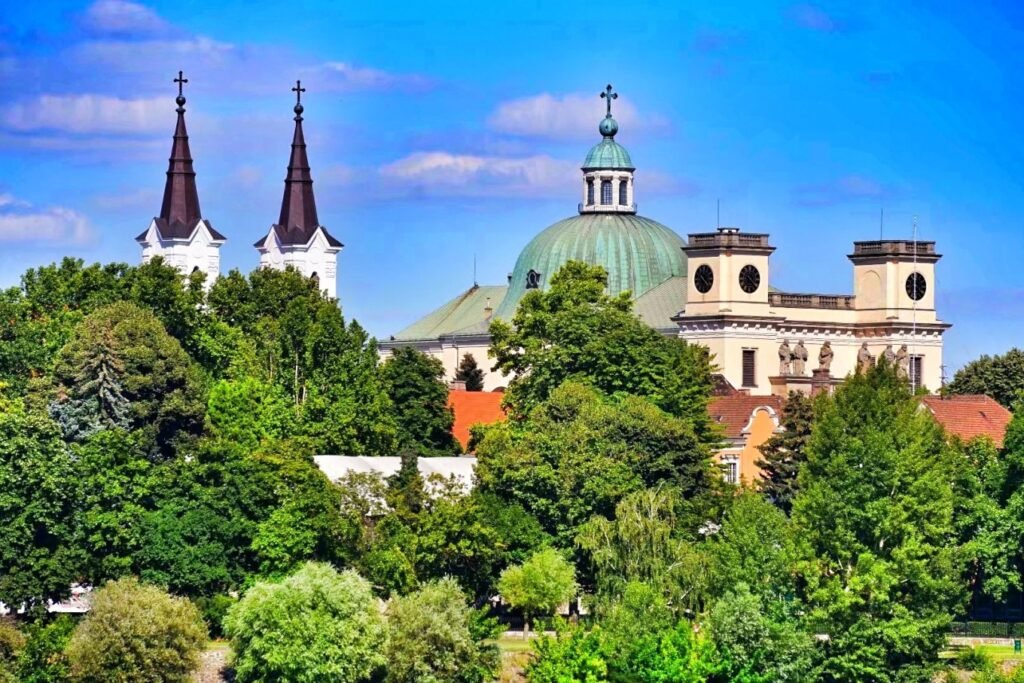
The Triumphal Arch of Vác, locally known as Diadalív or Kőkapu (Stone Gate), is the only triumphal arch in Hungary. It was built in 1764 to commemorate the arrival of Empress Maria Theresa. The structure is designed in the Neoclassical style, reflecting the elegance of the era. The arch stands close to the town’s former prison, and it is just a few minutes’ walk from the main square of Vác, where many of the town’s other attractions are located.
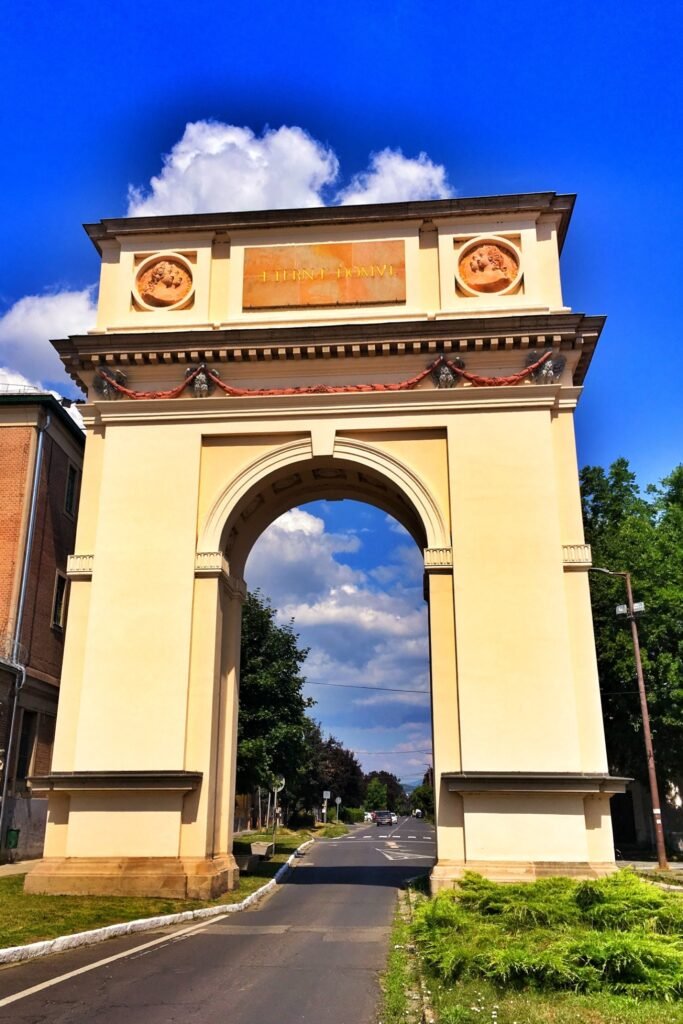
The Kőszentes Bridge is the oldest road bridge still in use in Hungary and is said to be the only remaining Baroque-style bridge in the country. Also known as the Stream Bridge or Central Bridge, it was constructed between 1753 and 1757. The bridge carries the weight of history, having witnessed centuries of change, and features sculptures along its span, each with symbolic meaning. This historic structure remains a testament to the architectural craftsmanship of the Baroque period.
